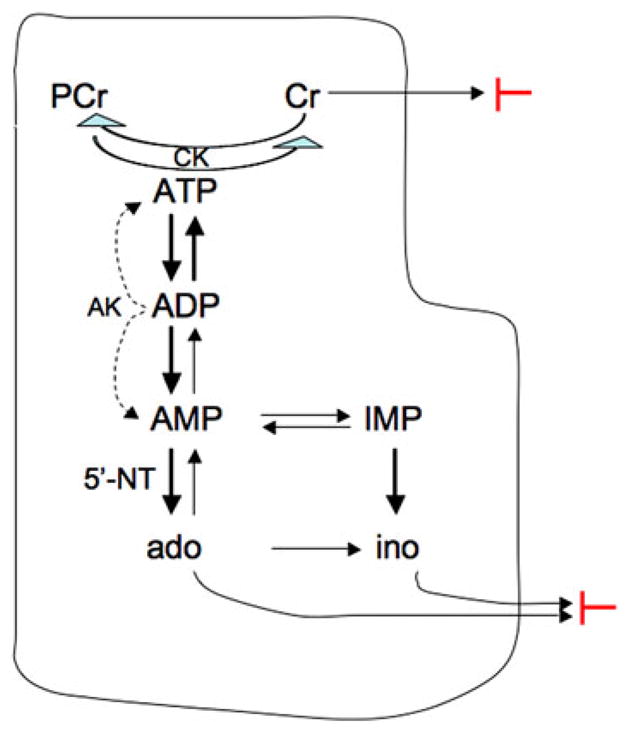Fig. 1.

Diagram showing the degradation of ATP illustrating the loss of nucleosides and creatine. The phosphocreatine (PCr) and creatine (Cr) system is the major energetic reserve system of the heart. When the increased utilization of ATP leads to the hydrolysis of PCr to Cr, the uncharged Cr accumulates and may be lost from the myocyte following its concentration gradient. Without adequate ATP replenishment via oxidative phosphorylation and via the creatine kinase (CK) reaction, ATP may be resupplied via the adenylate kinase (AK) reaction: 2ADP → 1ATP + 1AMP. This increase in AMP activates AMP-dependent 5′-nucleotidase (5′-NT) that leads to the conversion of AMP to Ado. The uncharged Ado is rapidly converted to Ino, and both Ado and Ino can cross the plasma membrane following their concentration gradients. A similar mechanism converts IMP to Ino (for detailed description see [18]). The two red blocks indicate where supplementation of the isolation buffers inhibits the loss of Cr and the loss of nucleosides
